You have seen in another post that there are five exercises you should really avoid but, on the optimistic side of the ledger, there are five exercises that patients and clinicians alike should be aware of.
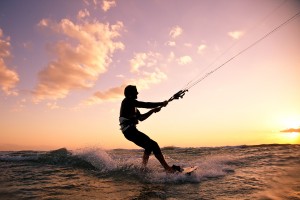
These five exercises incorporate exercise principles that allow them to be modified for people who have significant impairments or for people who are very strong and capable. The exercises can be done in any environment. Significant amounts of equipment are not required. Most of the exercises will incorporate some degree of balance training and the areas of muscular co-contraction as well as closed kinetic chain.
In general, the principles that should guide our selection of exercises involve the following:
• Exercises should not be performed in the seated position. Sitting is very hard on the musculoskeletal system.
• Exercises should use as many muscle groups as possible.
• Exercises should be functional and reproduce the demands that we see in our environment on a day to day basis.
• Exercises should help multiple conditions. For example, an exercise should involve both my hip and knee, as well as my back.
• The exercises should be relatively easy to understand.
• The exercises should not put areas of known degeneration into positions of risk. Areas of our body that our prone to degenerate include the intervertebral discs of our back, the rotator cuff and the medial meniscus of our knee. MRI studies of asymptomatic individuals have shown that up to 60% of 60-year olds have rotator cuff tears, 50% of 50-year olds have medial meniscal tears in their knee and the majority of people over the age of 35 will have disc abnormalities in their lumbar and cervical spines. Trying not to load these areas in an injurious fashion should be a key criterion for our exercise programs.
1. The Wall Squat – The wall squat is an excellent exercise that helps to strengthen the quadriceps, the hamstrings, the gluteal muscles, as well as the lumbar spine and other core muscles. The wall squat is easy to do and all we require is a slippery surface such as the back of a door. The wall squat is ideally performed a full step away from the wall, such that the feet are always more anterior than the knees. As we do the squat, we should keep our knees in line with our feet. By squeezing a ball between the knees during the wall squat, the individual can activate a muscle called the vastus medialis which helps to anchor the patella. As a rule, I do not have patients go past 90º of depth in their squat. Beyond 90º, the medial meniscus gets a substantial amount of pressure and this can perturb meniscal tears. In addition, beyond 45º of knee bend, there are increasing forces behind the kneecap on the articular surfaces of the kneecap and the femur. These are often degenerative in people and they can be provoked by deep squats. By putting your hands on your quadriceps, you can be sure that they are activating even during a 45º squat. In general, the descent of the squat is for about a second and the ascent is for about a second. I have individuals do high volumes of the wall squat over a day. 2oo squats is a reasonable goal.
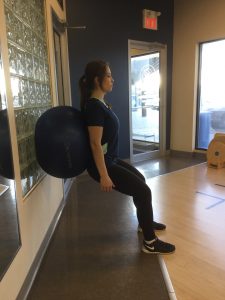
2. Brugger Exercises/The Cobra – The Brugger exercises are done by individuals sitting on the edge of their chair, opening their hands as wide as possible and retracting the arms through the shoulder blade. This helps to open up the shortened musculature over the front of our pectoral region, a consequence of sitting postures.
It also activates the musculature in between our shoulder blades, specifically the rhomboids and the middle fibers of the trapezius. It is an excellent tonic to those who have to sit and use a computer during the day. The Brugger exercise is simply done against our own postural imbalances. If done in the prone position on the ground and used against gravity, it is a little more difficult and will activate the spinal muscles even more. This can be a difficult posture for older people but can be done in bed. It can be made even more difficulty by doing it standing on one leg, and pulling exercise tubing from a focal point on the wall.
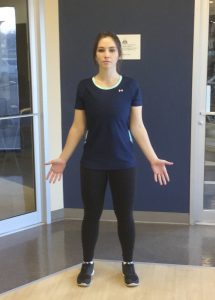
3. The Pushup – the pushup is an excellent exercise and can be started against the wall for elderly or weakened individuals or those recovering from a shoulder dislocation. It can be done on the ground, from the knees for people who are just beginning this type of exercise process. Done from the tiptoes, the pushup activates virtually every muscle in the body. It is a closed chain exercise for the shoulder which enhances stability for people who have unstable shoulder conditions such as dislocations or those who simply have loose shoulders known as glenohumeral laxity. The pushup can be modified in many fashions using devices such as the perfect pushup grip or balls or BOSU platforms. The BOSU platform, in particular, I find an excellent aid to performing pushups.
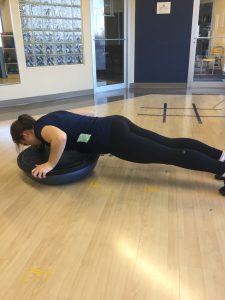
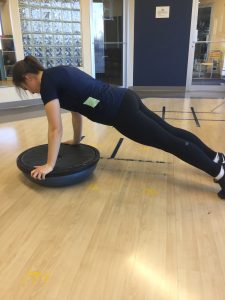
4. The Plank – The plank can be done in a prone position known as the front plank, the side position known as the side plank, or the bridge position sometimes known as a supine plank. These are regularly demonstrated in the literature as being safe and effective ways of strengthening the core. They activate essentially every muscle in our body, can be done with no equipment and are very functional. These exercises need to be preceded by the activation of our anterior abdominal wall muscle in a fashion known as abdominal bracing. The simplest way to learn abdominal bracing is to imagine someone is punching you in the stomach. This activation of your anterior abdominal wall muscles also facilitates activation of your pelvic floor and small muscles along your spine known as the multifidi. These are all important spinal stabilizers. One knees to avoid holding their breath, which is a natural tendency, when performing abdominal bracing.
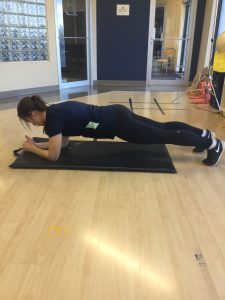
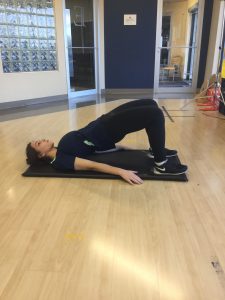
The normals that are quoted in the literature for the ability to hold a front and supine plank are very substantial. I encourage patients to get to at least 90 seconds for a front plank and at least 60 seconds for a supine bridge. These acts of endurance help to facilitate spinal stability in our environment.
The principles can be moved to the standing position where people can do a one legged plank-type activity by resisting movement with exercise bands or pulleys in the gym setting.
5. Walking – Walking is probably the single best exercise we can do for our cardiovascular systems. It is a simple, easy activity that provides a moderate stress to our cardiovascular system. Walking outside is good for the soul. Moderate stresses to our cardiovascular system are better than excessive stresses. There are some very sobering statistics that individuals who exercise excessively have a five to six times greater risk of developing dysrhythmias in their heart, particularly atrial dysrhythmias known as atrial fibrillation. More is not always better in the area of exercise.
Enjoy the Fab Five!
